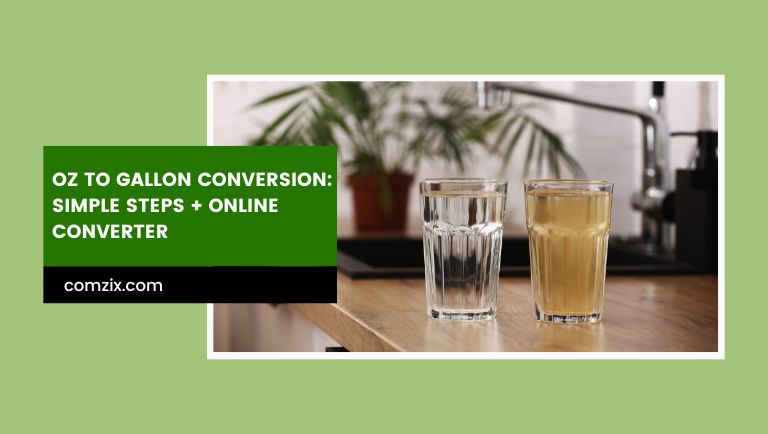Ever wonder how many ounces there are in a gallon? Knowing how to convert between ounces and gallons is really helpful, whether you’re busy preparing mouthwatering dishes, monitoring your water intake, or making sure accurate measures at work. This post seeks to make these conversions easier to understand while offering helpful advice that you may use into your everyday activities. Comprehending oz to gallon can undoubtedly enhance your life’s efficiency and smoothness, regardless of your vocation, level of passion for home cooking, or health-consciousness.
What is a Gallon?
A gallon is a common unit used to measure liquids and sometimes dry goods. In the United States, we have two main types: the liquid gallon for things like water and gasoline, and the dry gallon for items like grains. In the UK and some other countries, they use the Imperial gallon, which is a bit bigger than the U.S. ones.
What is an Ounce?
An ounce is a handy unit that works for both weight and volume. When you’re talking about liquids, like milk or juice, you use fluid ounces. For solids, such as flour or sugar, ounces measure weight. It’s important to remember the difference between these ounces to make sure you’re getting your measurements right.
Understanding gallons and ounces comes in handy in daily life, whether you’re cooking up a recipe, filling your car with gas, or just trying to figure out how much milk to buy at the store. These units help us communicate about quantities in a way that makes sense to everyone.
Converting Oz to Gallon
Fluid Ounces to Gallons Conversion
Types of Gallons
U.S. Liquid Gallon
The U.S. liquid gallon is the most common type, measuring 128 fluid ounces. It’s used extensively in everyday tasks like cooking and measuring liquids for beverages.
U.S. Dry Gallon
Slightly larger than its liquid counterpart, the U.S. dry gallon equals approximately 148.9468 fluid ounces. It’s primarily used for measuring dry commodities such as grains and fruits.
Imperial Gallon
In countries following the Imperial system, the Imperial gallon is larger still, containing 160 fluid ounces. It’s used for both liquid and dry measurements, offering a different standard compared to U.S. gallons.
FAQs
How many ounces are in a gallon of water?
There are 128 fluid ounces in a U.S. liquid gallon of water.
What is the difference between a U.S. liquid gallon and an Imperial gallon in ounces?
A U.S. gallon holds 128 fluid ounces, while an Imperial gallon has 160 fluid ounces. This difference arose from historical standards set by the United States and the United Kingdom, respectively.
Can you convert weight ounces to fluid ounces?
No, weight ounces measure mass (like how heavy something is), while fluid ounces measure volume (like how much space something takes up in a container). For example, 8 ounces of water by weight isn’t the same as 8 fluid ounces of water by volume—they represent different quantities.
Why are there different types of gallons?
Different gallons exist because of historical reasons and regional differences. Over time, various places developed their own gallon standards to suit their specific needs. The U.S. adopted its gallon size in the late 18th century based on British measurements but slightly adjusted it over time, while the Imperial gallon remained larger due to historical precedents in the UK.
Wrapping up
Understanding oz to gallon conversions is more than just a matter of numbers; it’s about efficiency, accuracy, and success in various aspects of life and work. By mastering these conversions and knowing when to apply them, you empower yourself to navigate culinary challenges, monitor health goals, and excel in professional endeavors. Whether you’re measuring ingredients for a recipe or optimizing industrial processes, precise conversions ensure you achieve your desired outcomes with confidence.





